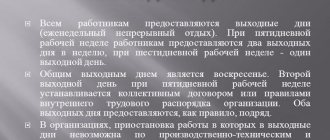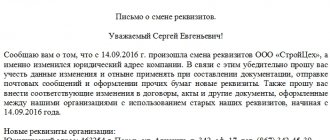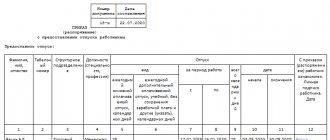The professional standard of a watchman as such has not yet been approved for any industry where his labor is used. But there is a draft professional standard for a specialist in ensuring the protection of individuals and property, which regulates the activities of watchmen and security guards - so we’ll talk about it in this article.
Who is a watchman and where is his work used?
The difference between a watchman and a security guard
General description of the draft professional standard for a security specialist
Labor function of a watchman
Requirements for a watchman
Knowledge and skills required for a watchman
Features of the guard's working conditions
You can find more complete information on the topic in ConsultantPlus. Full and free access to the system for 2 days.
Who is a watchman and where is his work used?
A watchman is a working profession, but it is not mentioned in the unified tariff and qualification reference book; there is only a security guard there. At the same time, tariff and qualification characteristics for the watchman profession were approved by Resolution of the Ministry of Labor No. 31 of November 10, 1992, according to which the watchman must:
- check the integrity of the object;
- during the walkthrough, make sure that the locks are locked, the seals are intact, no one has entered the building, the alarm system is turned on and working;
- If you find traces of a break-in, report this to management, the police, or the security post in accordance with the instructions;
- if a fire occurs, call the fire service and, to the best of your ability, eliminate the source of the fire or at least prevent the spread of fire;
- during duty, organize the passage of citizens and vehicles to and from the territory that is guarded;
- verify documents with actual cargo leaving and entering the territory being guarded.
The work of a watchman can be used in various fields: to protect warehouses and offices, shops and administrative institutions. Its employers can be both organizations and individual entrepreneurs. Also, the services of watchmen are often used in housing cooperatives and homeowners' societies. Previously, the position of night watchman was also found in educational organizations, but now the professional standard for an employee for ensuring the security of educational organizations is in force, approved by Order of the Ministry of Labor No. 1010n dated December 11, 2020, which allows only security guards to work.
A common feature of all possible guard jobs is the low risk of attack. Security guards are involved in the protection of objects where, due to the presence of attractive material assets, the likelihood of penetration is higher. The difference between these two professions will be explained in the next section.
Job description of a watchman
567 106788
We bring to your attention a typical example of a job description for a watchman at an enterprise, school, childcare center or institution, sample 2020. Any person can be appointed to this position: there are no education or work experience requirements. Don’t forget, every instruction is given to the guard against receipt.
The hr-portal website provides typical information about the knowledge that a watchman should have. About duties, rights and responsibilities.
This material is included in the huge library of job descriptions on our website, which is updated daily.
General provisions
1. The watchman belongs to the category of workers.
2. A person is hired for the position of a watchman without presenting requirements for education and work experience.
3. A watchman is hired and dismissed from the position by the __________ (director, manager) of the organization upon the recommendation of __________ (position).
4. The watchman must know:
a) special (professional) knowledge for the position:
— regulations and instructions on access control;
— samples of signatures of persons who have the right to sign passes for the removal and export of material assets or to visit an enterprise, plant, institution; samples of permanent and one-time passes;
— rules and instructions for the protection of objects;
— boundaries of the protected object;
- telephone numbers of representatives of the administration of the protected facility and the duty officer at the police department.
b) general knowledge of an employee of the organization:
— rules on labor protection, industrial sanitation and fire safety;
— requirements for the quality of work (services) performed and for the rational organization of labor in the workplace;
— production alarm.
5. In his activities, the watchman is guided by:
- legislation of the Russian Federation,
— Charter (regulations) of the organization,
— orders and instructions of the __________ (general director, director, manager) of the organization,
- this job description,
— Internal labor regulations of the organization,
— __________________________________________________.
6. The watchman reports directly to __________ (a worker with a higher qualification, the head of production (site, workshop) and the director of the organization)
7. During the absence of a watchman (business trip, vacation, illness, etc.), his duties are performed by a person appointed __________ (position of the head) of the organization on the proposal of __________ (position) in the prescribed manner, who acquires the corresponding rights, duties and is responsible for the fulfillment of the assigned responsibilities on him.
Job responsibilities of a watchman
The duties of the watchman are:
a) Special (professional) job responsibilities:
— Duty at the entrance of an enterprise, plant, institution.
— Passage of employees, visitors, automobile or horse-drawn transport to the territory of the enterprise and back upon presentation of the relevant documents: passes, invoices, waybills, etc.
— Reconciliation of accompanying documents with the actual availability of cargo; opening and closing gates.
— Together with a representative of the administration or a shift watchman, checking the integrity of the protected object, locks and other locking devices, the presence of seals, the serviceability of alarm devices, telephones, lighting, and the availability of fire-fighting equipment.
— If faults are identified that do not allow the object to be taken under protection, he reports this to the person to whom he is subordinate.
- In cases of detection of broken doors, windows, walls, locks, absence of seals and seals, or an alarm signal at the facility, immediately informs the representative of the administration and the person on duty at the police station and protects traces of the crime until the arrival of the police.
— If a fire occurs at the facility, raises the alarm, notifies the fire brigade, reports the incident to the officer on duty at the police station, and takes measures to extinguish the fire.
— Reception and delivery of duty with the corresponding entry in the journal.
— In case of non-arrival of the shift at the appointed time, informs the representative of the administration of the protected facility.
— Maintaining the entrance area in proper sanitary condition.
b) General job responsibilities of an employee of the organization:
— Compliance with the internal labor regulations and other local regulations of the organization, internal rules and regulations of labor protection, safety precautions, industrial sanitation and fire protection.
— Fulfillment, within the framework of the employment contract, of the orders of the employees to whom it was repaired in accordance with these instructions.
— Carrying out work on acceptance and delivery of shifts, cleaning and washing, disinfection of serviced equipment and communications, cleaning the workplace, fixtures, tools, as well as maintaining them in proper condition.
— Maintaining established technical documentation.
Watchman's rights
A watchman at an enterprise has the right:
1. Submit proposals for management’s consideration:
— to improve work related to the responsibilities provided for in this instruction,
— on bringing to material and disciplinary liability workers who violated production and labor discipline.
2. Request from structural divisions and employees of the organization the information necessary for him to perform his job duties.
3. Get acquainted with the documents defining his rights and responsibilities for his position, criteria for assessing the quality of performance of official duties.
4. Get acquainted with the draft decisions of the organization’s management relating to its activities.
5. Require the management of the organization to provide assistance, including ensuring organizational and technical conditions and execution of the established documents necessary for the performance of official duties.
6. Other rights established by current labor legislation.
Watchman's responsibility
The watchman is responsible in the following cases:
1. For improper performance or failure to fulfill one’s job duties provided for in this job description - within the limits established by the labor legislation of the Russian Federation.
2. For offenses committed in the course of their activities - within the limits established by the current administrative, criminal and civil legislation of the Russian Federation.
3. For causing material damage to the organization - within the limits established by the current labor and civil legislation of the Russian Federation.
Job description for a watchman (at an enterprise / at a school / watchman / kindergarten / institution) - sample 2020. Job duties of a watchman, rights of a watchman, responsibility of a watchman.
The difference between a watchman and a security guard
The profession of a security guard in ETKS, and if you compare a security guard with a watchman, it turns out that they have a number of identical job responsibilities:
- ensure the integrity of the object (protect the object);
- organize passage of citizens and vehicles to and from the facility;
- check exported/imported cargo for compliance with documents.
However, there are also serious differences. For example, a security guard, instead of reporting to management or law enforcement agencies about detected violations, as a watchman does, is obliged to independently take measures to prevent and suppress the violation. To do this, he can use special technical means permitted for use, civilian and service weapons, as well as physical force.
That is, a security guard is like a watchman with broader powers, entailing more stringent qualification requirements. For example, if he is allowed to use weapons, then he must undergo special training courses and have the right to carry weapons.
General description of the draft professional standard for a security specialist
The draft professional standard for a specialist in ensuring the protection (security) of individuals and property is still awaiting approval. The purpose of the professional activity of these specialists is to ensure the protection of protected persons and objects from illegal attacks, the protection of cargo along the route, as well as ensuring law and order during public events.
This professional standard should include positions such as:
Subscribe to our newsletter
Read us on Yandex.Zen Read us on Telegram
- watchman;
- senior guard shift;
- private security guard;
- departmental security shooter;
- head of the security department, etc.
At the same time, the performance of eight generalized labor functions with skill levels from first to eighth should be divided between them.
It is assumed that the watchman will be assigned to perform only one generalized labor function - the first, with qualification level 1. This means that the watchman is only allowed to protect property, they are not entrusted with the protection of individuals. In addition, guards are supposed to perform their work function only at the workplace, i.e. they also do not escort and guard cargo.
Occupational safety requirements in emergency situations
4.1. In case of an accident:
- immediately organize first aid for the victim, if necessary, call an ambulance by calling 103 or take him to a medical organization.
4.2. If a fire or signs of combustion are detected (smoke, burning smell, etc.), you must:
— take measures to extinguish the fire using fire extinguishing means available at the workplace;
- if it is impossible to extinguish the fire on your own, immediately report the fire by calling 101 or 112 (give the address of the facility, the location of the fire, your last name), as well as your immediate supervisor.
4.3. When an alarm is triggered, report to your immediate supervisor, arrive on site and establish the reason for the alarm. If a danger is detected that threatens property, personal safety, or other illegal actions, the watchman must immediately call the police department by calling 102 and report the incident to the supervisor.
Labor function of a watchman
As already mentioned, according to the draft professional standard, the watchman is assigned to perform one generalized labor function - protecting property without the use of engineering and technical means and physical force. As part of this generalized function, the watchman performs 2 specific ones, which state that he must:
- Check the integrity of the object, inspect window and door openings, locks, seals (if any). If violations are detected in this case, the watchman is instructed to immediately inform management and the police.
- Raise the alarm and notify the fire department and management about the occurrence of a fire or other incident, as well as take measures to eliminate the source of fire.
The draft professional standard imposes on the watchman the following labor actions:
- visual monitoring of the situation (in this case, the use of inspection equipment and systems for assessing the quality and quantity of material assets is allowed);
- analysis of the current situation, the result of which may be a decision to issue alarm signals and contact law enforcement agencies;
- checking visitors, issuing them passes or putting marks on passes;
- checking the integrity of facility security measures (locks, seals);
- monitoring the status of technical means of protection (panic button, alarm, etc.);
- external and internal bypass of the object;
- notifying emergency services, fire departments, and the Ministry of Emergency Situations about the occurrence of man-made accidents and natural disasters, as well as taking measures to ensure the safety of property;
- taking measures to identify eyewitnesses and eyewitnesses, as well as to preserve the scene of the incident in an inviolable form if there is a suspicion that attackers have committed actions regarded as an encroachment on a protected object;
- checking the correctness of filling out accompanying documents for cargo imported into and exported from the protected area.
Labor protection requirements during work
3.1. While on duty, a watchman is obliged to:
— strictly ensure the established access regime;
— check the compliance of the cargo removed from the territory of the facility with its quantity specified in the relevant documents;
— periodically (during working hours once every two hours, during non-working hours every hour) to walk around the internal territory of the facility;
— prevent any attempts to enter the territory of the facility by unauthorized persons;
- if a danger is detected that threatens property, personal safety, or other illegal actions, the watchman must immediately call the police department by calling 102 and report the incident to the supervisor.
3.2. While on duty, a watchman is prohibited from:
- allow unauthorized persons into the workplace;
— leave the post, with the exception of cases of detaining persons committing illegal encroachments on protected objects, providing first aid to persons injured in emergency situations, as well as during natural disasters, when continued stay at the post poses a threat to life;
- deviate from a safe route when walking around the territory of a protected facility without sufficient grounds;
- walk along railway tracks, cross them under standing cars;
- use electric heating devices that are not factory-made or have an open spiral, repair them and leave them turned on unattended;
— touch broken or exposed electrical wires, stand on them;
— allow the lighting of fires, burning of containers and industrial waste at protected sites and near them;
- use ladders without hooks and anti-slip tips, other auxiliary items to inspect vehicles, inspect vehicles from the steps or wheels;
— check passes (other documents) for the right to exit (enter) while vehicles are moving;
- allow unauthorized persons to operate automatic gates;
- be located in the loading and unloading area.
3.3. In the absence of central heating, to heat the room, it is necessary to use a factory-made electric heater with a closed spiral. The electric heater should be installed on the floor on an iron or asbestos sheet.
3.4. At posts located at travel gates, the watchman must inspect vehicles only after they have come to a complete stop and with the engine not running, using overpasses, and in exceptional cases, using ladders with hooks and anti-skid tips. When vehicles are moving, the employee must be on a traffic island.
3.5. Overpass platforms must be no lower than the sides of trucks, have an area of at least one square meter, with steps and railings for the safe ascent and descent of security workers.
3.6. Before leaving the vehicle from the territory of the facility, the watchman is obliged to:
— stop the vehicle;
— carry out an inspection and check of the property in the vehicle;
— open the mechanized gates, secure them with special hooks or clamps and stand in a safe place (safety island).
3.7. When operating mechanized gates, the watchman must:
— remove the locking device if the mechanized gate leaves are additionally closed;
— make sure that there are no people, vehicles and foreign objects in the movement area of the gate leaves;
— open and close the gate leaves by pressing the corresponding buttons on the control panel of the mechanized gates until the drive is turned off and the leaves stop in their extreme positions;
— stop work and inform the immediate supervisor of the work and an official of the customer if a malfunction of the mechanized gates occurs;
— set the mechanized gate leaves to the “closed” position after finishing work.
Requirements for a watchman
Professional standards are developed in such a way that only employees who meet certain qualification requirements are allowed to perform each generalized job function. So, in order to be able to work as a watchman, an employee must undergo short-term training under an additional educational program. There are no requirements for the employee’s experience in the project, and there are no special conditions for permission to work.
Also, each job function is assigned a corresponding skill level, which reflects the complexity of the job. For all professional standards, there are 8 qualification levels, of which the first one corresponds to the work of a watchman (simple work that does not require special skills).
If we take into account the Order of the Ministry of Labor No. 148n dated April 12, 2013, which approved qualification levels for the purpose of developing draft professional standards, then this level can be deciphered as follows:
- Authority and responsibility: the watchman’s activities are completely under the direction of his superiors, without any elements of independence, while the watchman bears individual responsibility.
- Nature of Skills: A watchman is required to perform standard tasks, usually involving physical labor.
- Nature of knowledge: the watchman uses basic factual knowledge and a limited range of specialized knowledge in his activities.
- Ways to achieve qualifications: short-term training, instruction, practical experience.
Knowledge and skills required for a watchman
The draft professional standard stipulates that a watchman should know:
- their job responsibilities, technical regulations used by the employer and conditions for ensuring the safety of property;
- principles of operation of technical equipment used to protect the territory;
- possible types of illegal attacks and methods for identifying them;
- officials responsible for actions within the framework of access control at the facility, as well as local acts regulating it;
- organization of activities at the facility;
- regulations governing labor relations with the employer and the field of labor protection;
- operating mode at a guarded facility;
- ethics of business communication;
- rules for the use of technical security equipment and fire extinguishing equipment, their location.
The project lists the skills required for a watchman as follows:
- ability to work with equipment provided by the employer;
- compliance with business ethics;
- maintaining the confidentiality of information received during the performance of a job function.
Also, the draft professional standard outlines ethical points that a watchman must know and observe, namely:
- perform work efficiently and impartially;
- do not hide reliable facts, report them to management;
- do not disclose information that becomes known during the course of work without prior approval from superiors;
- avoid creating conflict situations;
- refrain from actions that could damage the company’s reputation;
- transfer information to law enforcement agencies about all offenses committed at the protected facility.
How to create a shift schedule. Sample
The charter (A) of the bank is formed at the expense of the participants’ own funds and serves as security for it (B). The size of the minimum authorized capital and the procedure for its calculation are determined by the Central Bank of the Russian Federation. (B) is formed through deductions from profits and serves to cover losses arising from the main activities of the bank. The minimum amount of this fund is up to 15% of the authorized capital. Commercial (G) can form special funds: economic stimulation, depreciation of fixed assets, production purposes. The formation of required reserves is mandatory and is included in (D) banking services provided. In some cases, mandatory reserve funds are formed from profits. Insurance reserves are created against possible depreciation of investments in securities and losses on issued loans. Retained profit is the part of profit remaining after payments to the budget, contributions to reserve capital, special funds and payments (E). List of terms: 1) reserve fund 2) profit 3) capital 4) dividends 5) bank 6) liquidity 7) salary cost 9) bankruptcy Write the results in the table. Each word can only be used once. A B C D E E 5. The state finances the health care system. What economic function does the state perform in this case? 1) filling the state budget 2) legal regulation of the economy 3) regulation of the money supply in circulation 4) production of public goods 6. Select the correct judgments about the banking system. 1The main activity of the Central Bank is issuing loans to the population. 2Commercial banks do not have the right to produce material assets. 3Both state and commercial banks are required to comply with the standards established by the Central Bank. 4Commercial banks are authorized to provide loans to the population and enterprises. 5Commercial banks can issue banknotes. 7.The state performs various functions in the economic life of society. In particular, it supports and protects competition. Which of the following examples illustrates this function? 1) the government changed the procedure for buying and selling land 2) the central bank implemented a set of anti-inflationary measures 3) a new school was opened as part of the state program for the development of education 4) parliament made changes to the antimonopoly legislation 8. The government took measures to strengthen the national currency and reduce inflation. What economic function of the state does this example illustrate? 1) maintaining the stability of the financial system 2) legal regulation of the economy 3) regulating relations between employees and employers 4) protecting competition from monopolism 9. The main sources of funds entering the state budget include 1) profits of firms 2) payments on loans received 3) wages of employees 4) direct and indirect taxes 10. Establish a correspondence between examples of state activities and the functions of the state in a market economy: for each element given in the first column, select the corresponding element from the second column. Write down the selected numbers in the table under the corresponding letters. Examples of state activities Functions of the state in a market economy A. Legal support for competition B. Combating monopolization of the economy C. Organization of public transport D. Payment of benefits to large families E. Provision of public services 1. Production of public goods 2. Regulation of market relations 3. Social security population Answers 1 - 125; 2-1, 3 – 12211, 4 – 361584, 5 – 4, 6-234, 7-4, 8-1, 9-4, 10-22131
The size of the minimum authorized capital and the procedure for its calculation are determined by the Central Bank of the Russian Federation. (B) is formed through deductions from profits and serves to cover losses arising from the main activities of the bank. The minimum amount of this fund is up to 15% of the authorized capital. Commercial (G) can form special funds: economic stimulation, depreciation of fixed assets, production purposes. The formation of required reserves is mandatory and is included in (D) banking services provided. In some cases, mandatory reserve funds are formed from profits. Insurance reserves are created against possible depreciation of investments in securities and losses on issued loans. Retained profit is the part of profit remaining after payments to the budget, contributions to reserve capital, special funds and payments (E). List of terms: 1) reserve fund 2) profit 3) capital 4) dividends 5) bank 6) liquidity 7) salary cost 9) bankruptcy Write the results in the table. Each word can only be used once. A B C D E E 5. The state finances the health care system. What economic function does the state perform in this case? 1) filling the state budget 2) legal regulation of the economy 3) regulation of the money supply in circulation 4) production of public goods 6. Select the correct judgments about the banking system. 1The main activity of the Central Bank is issuing loans to the population. 2Commercial banks do not have the right to produce material assets. 3Both state and commercial banks are required to comply with the standards established by the Central Bank. 4Commercial banks are authorized to provide loans to the population and enterprises. 5Commercial banks can issue banknotes. 7.The state performs various functions in the economic life of society. In particular, it supports and protects competition. Which of the following examples illustrates this function? 1) the government changed the procedure for buying and selling land 2) the central bank implemented a set of anti-inflationary measures 3) a new school was opened as part of the state program for the development of education 4) parliament made changes to the antimonopoly legislation 8. The government took measures to strengthen the national currency and reduce inflation. What economic function of the state does this example illustrate? 1) maintaining the stability of the financial system 2) legal regulation of the economy 3) regulating relations between employees and employers 4) protecting competition from monopolism 9. The main sources of funds entering the state budget include 1) profits of firms 2) payments on loans received 3) wages of employees 4) direct and indirect taxes 10. Establish a correspondence between examples of state activities and the functions of the state in a market economy: for each element given in the first column, select the corresponding element from the second column. Write down the selected numbers in the table under the corresponding letters. Examples of state activities Functions of the state in a market economy A. Legal support for competition B. Combating monopolization of the economy C. Organization of public transport D. Payment of benefits to large families E. Provision of public services 1. Production of public goods 2. Regulation of market relations 3. Social security population Answers 1 - 125; 2-1, 3 – 12211, 4 – 361584, 5 – 4, 6-234, 7-4, 8-1, 9-4, 10-22131
Attached files
The entry was published by uploader in the Other category.
Features of the guard's working conditions
The work activity of a watchman has its own characteristics related to working conditions. So, when getting a job, he must understand that he will have an individual work schedule, different from what is established in the organization for the majority of workers. We are talking about the possibility:
- irregular working hours;
- working on weekends and holidays;
- involvement in overtime and night work;
- work in unfavorable climatic conditions;
- work in high-risk environments.
All these points should be reflected in the employment contract concluded with the watchman if the employer is sure that they will actually take place.
So, the watchman, according to the reviewed draft professional standard for a specialist in ensuring the protection (security) of individuals and property, is the least qualified worker among those involved in such activities. He has minimal job responsibilities, which consist of monitoring the facility and reporting information about detected violations according to instructions. This means setting minimum qualification requirements for the watchman. In fact, undergoing regular training may be quite enough for an employee to start working.
The minimum of responsibilities and requirements has led to the fact that the watchman is involved only in protecting property. At the same time, certain professional standards developed for certain areas of security may exclude the work of a guard altogether (as, for example, in the case of security of educational organizations).
What requirements must an employee’s workplace meet?
Occupational safety is a primary requirement!
The most important requirement when organizing a workplace is to ensure safe, comfortable working conditions and to prevent the occurrence of occupational diseases and accidents. This entire set of measures is called occupational safety and health.
In other words, labor protection, in essence, is a system of legislative acts in conjunction with socio-economic, organizational, technical, hygienic, therapeutic and preventive measures and means that ensure safe working conditions and the preservation of the health of enterprise employees.
To do this, it is necessary to create favorable working conditions in accordance with sanitary standards, safety regulations, ergonomics, and aesthetics.
Indoor microclimate
The legislation of our country strictly regulates the temperature and humidity of indoor air. In particular, when the average daily temperature outside is below 10°C, the amplitude of its fluctuations indoors should be 22-24°C. When the ambient temperature is higher than the specified value - 23-25°C. In case of temporary non-compliance with these conditions in one direction or another, the length of the working day is reduced (SanPiN 2.2.4.3359-16 dated June 21, 2020 No. 81).










